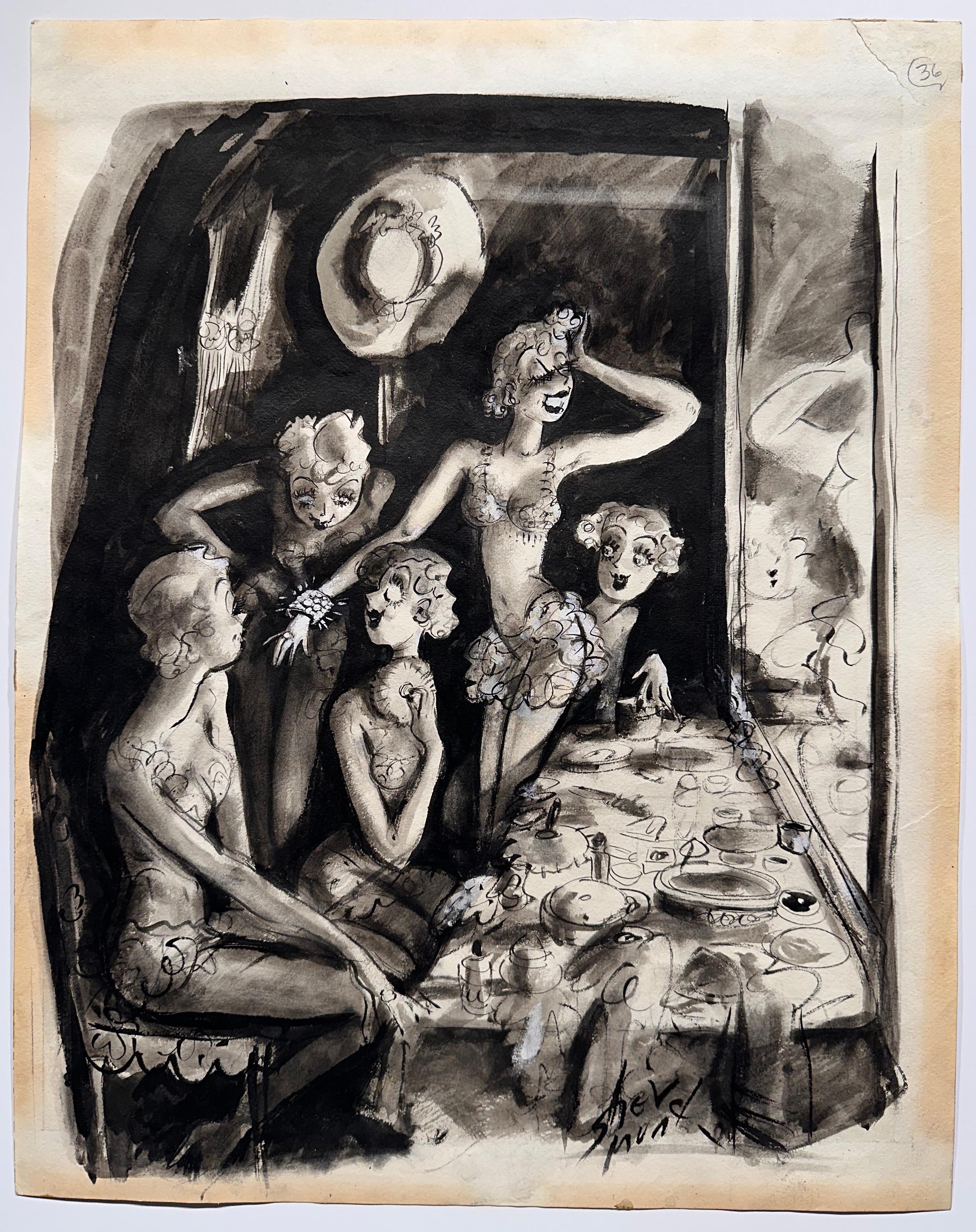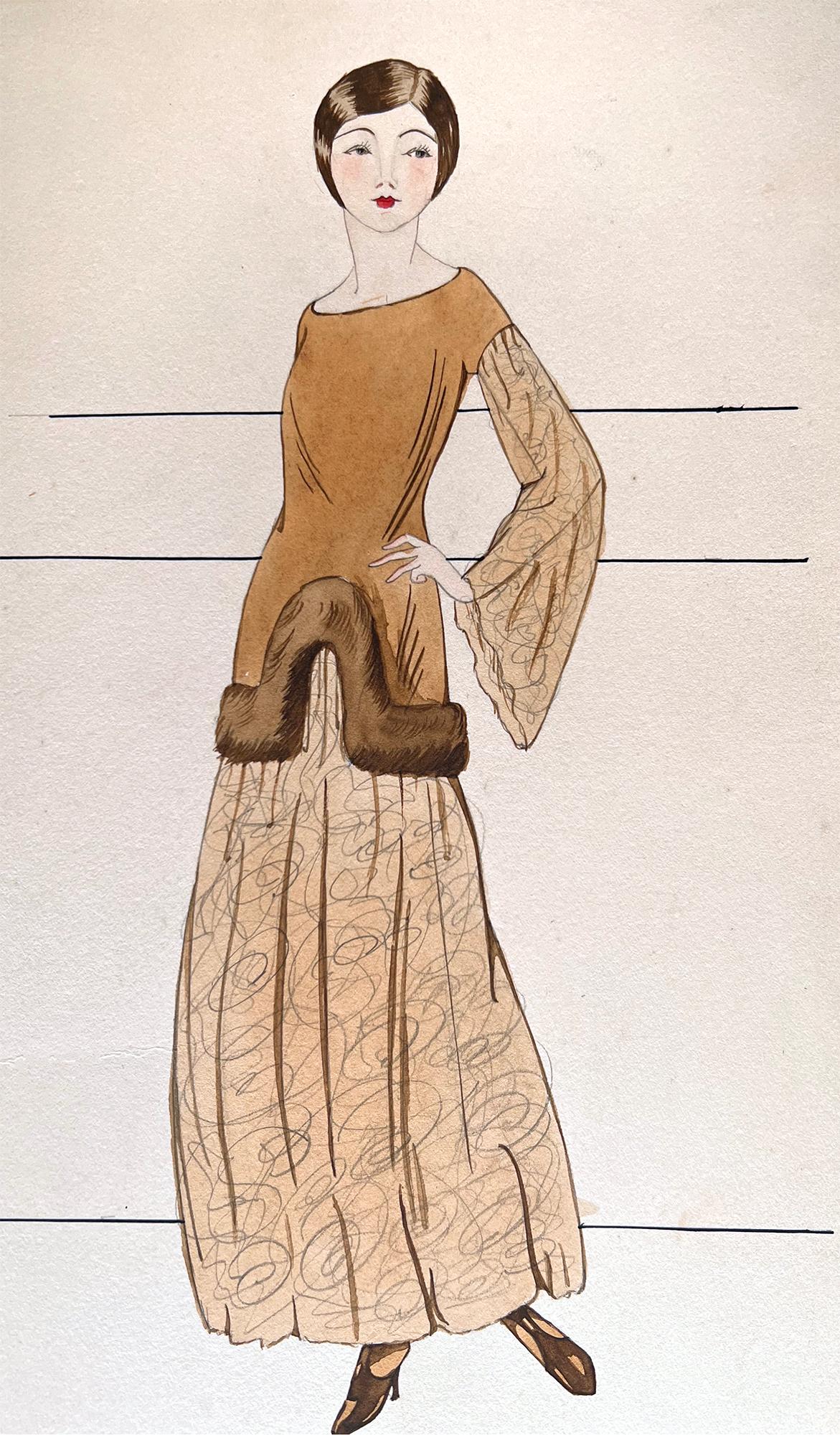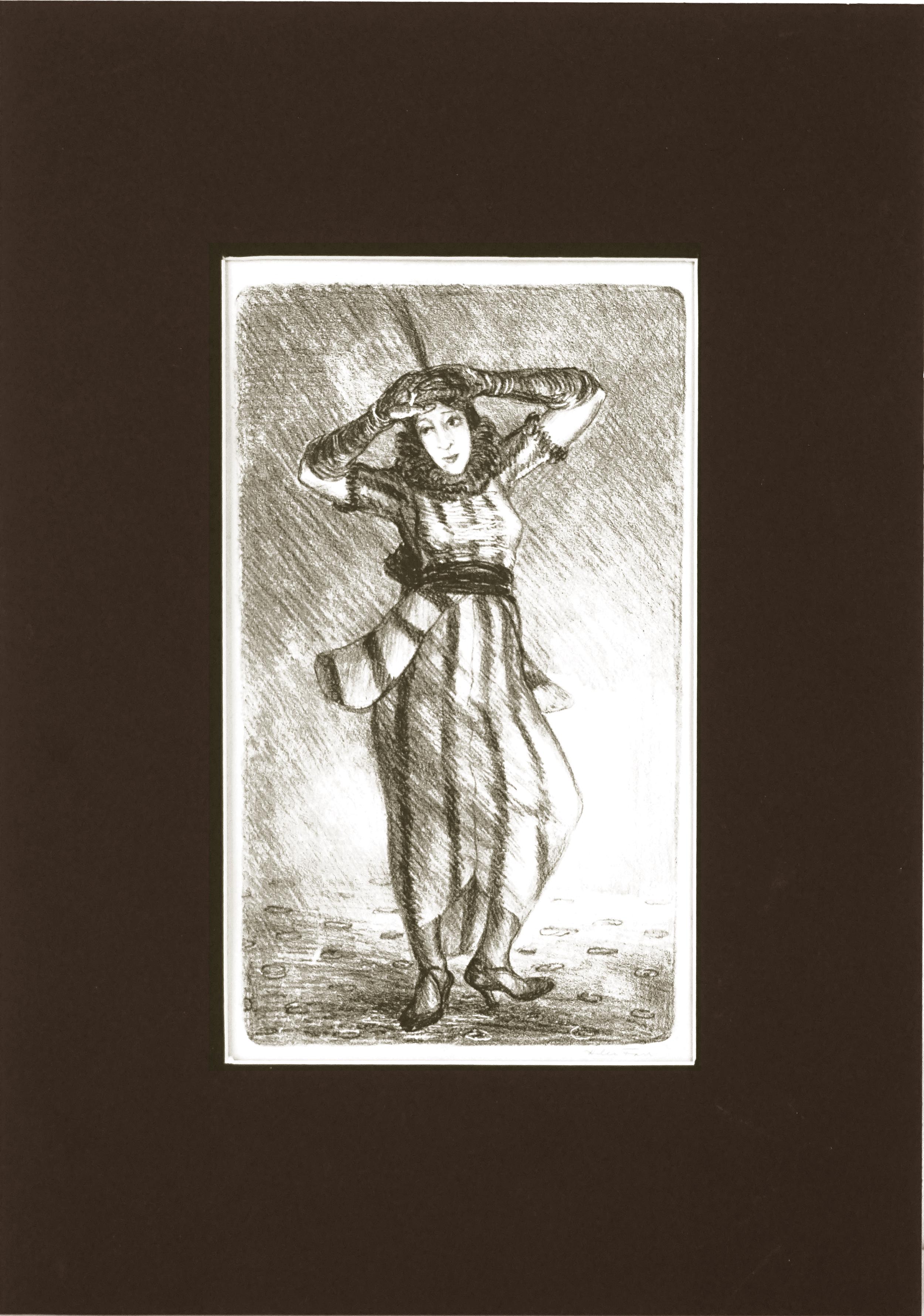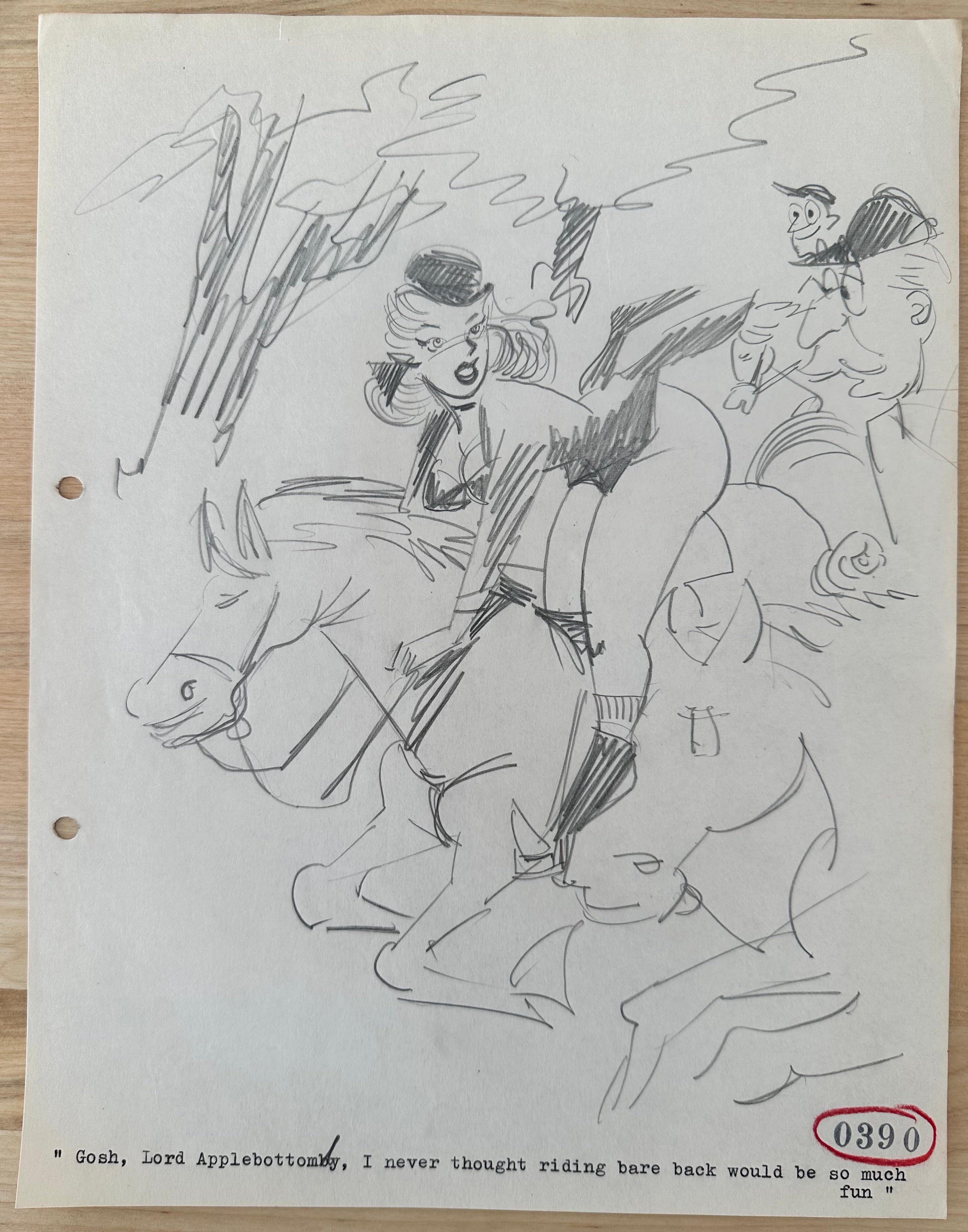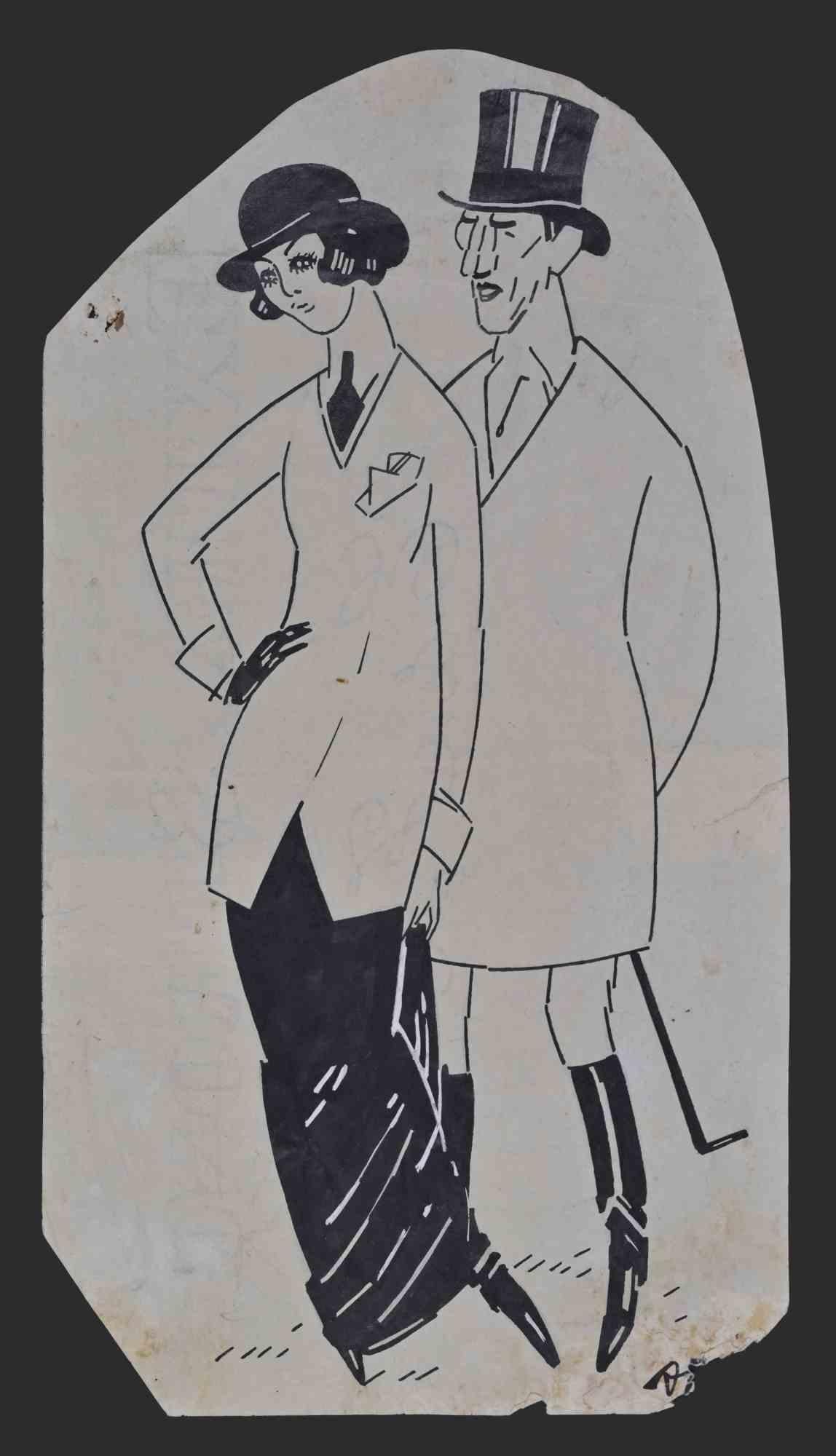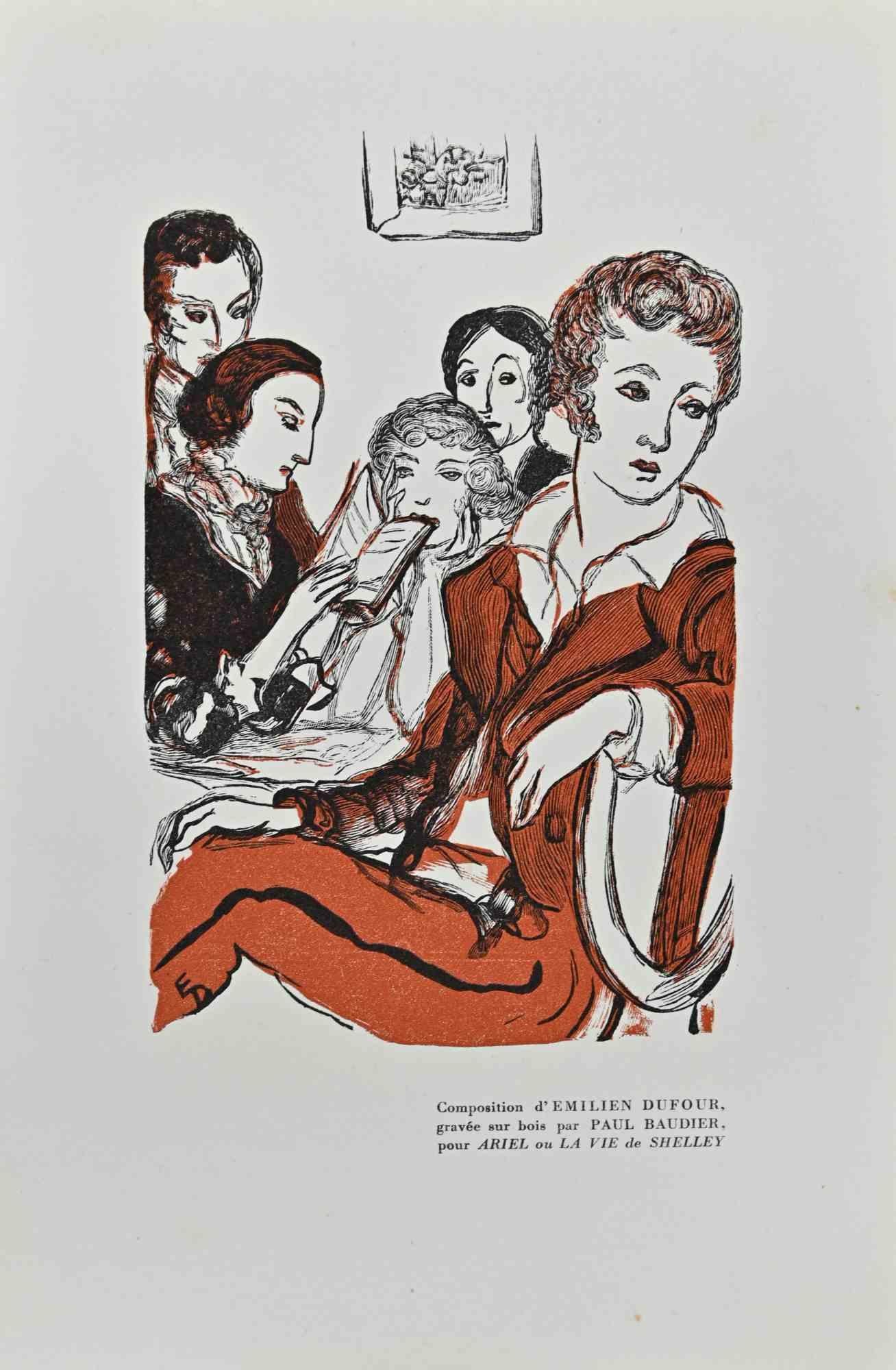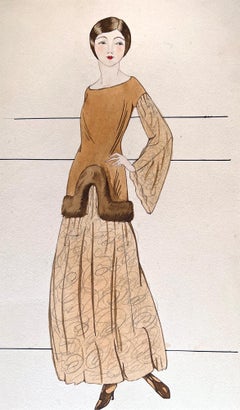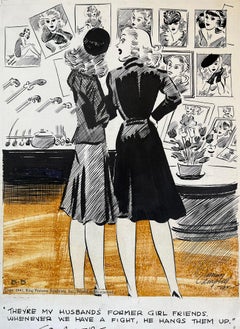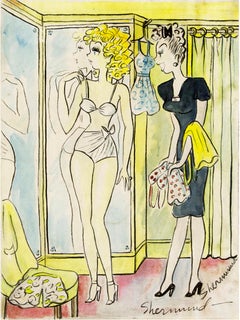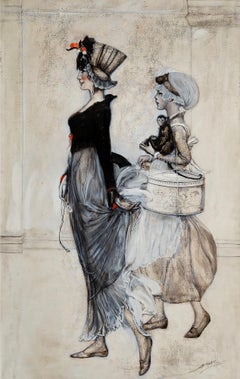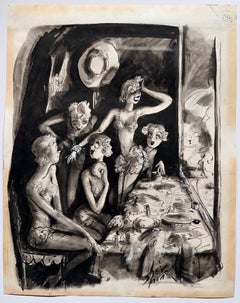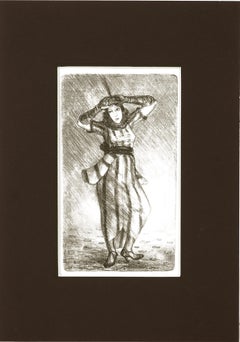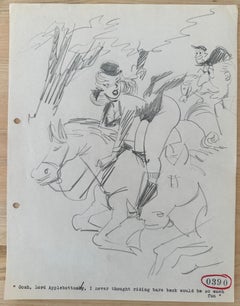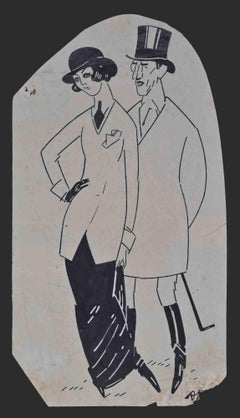Items Similar to Flapper Fanny - Female Cartoonist of the Golden Age
Video Loading
Want more images or videos?
Request additional images or videos from the seller
1 of 13
Sylvia SneidmanFlapper Fanny - Female Cartoonist of the Golden Age1940
1940
$4,000
£3,032.55
€3,495.73
CA$5,633.36
A$6,246.98
CHF 3,282.32
MX$76,327.45
NOK 41,066.34
SEK 38,547.78
DKK 26,096.29
About the Item
Flapper Fanny - Female Cartoonist of the Golden Age
Sylvia Sneidman was originally a fashion illustrator, but assumed the helm of the famous jazz-age panel cartoon "Flapper Fanny Says," which was created by Ethel Hays. Sneidman abbreviated the name to Flapper Fanny. Typeset caption at the bottom reads: "Shees...skees...I don't care how you say 'em! Get these things offa me!" Unsigned India ink. Unframed - Live area 10 x 8
Not Framed. Wear and markings in keeping with illustration and publishing process.
Overall: 11.5 x 8.75 inches
________________________________________________
Bio : Credit - Allan Holtz, Stripper's Guide
Sylvia Sneidman was born on November 16, 1909, in Baltimore, Maryland, according to East Hampton Star (New York), January 26, 1989, and a 1931 passenger list at Ancestry
In the 1910 U.S. Federal Census, Sylvia was the youngest of two daughters born to Maurice and Rose. They lived in Baltimore at 2820 Parkwood Avenue. Her father was a traveling salesman.
The 1920 census said the family lived in Newport News, Virginia at 76 33rd Street.
The Sneidmans were residents of Pittsburgh, Pennsylvania, at 5821 Phillips Avenue, according to the 1930 census.
The Sun (Baltimore, Maryland), July 10, 1931, reported the Maryland Institute students, including Sylvia, had reached Europe. She returned from the trip on August 14, 1931, in New York City, as recorded on the passenger list.
Sylvia found work at the Pittsburgh Press. The June 20, 1934 edition published her fashion drawings. The Star (Wilmington, Delaware) published her illustration for a serial story on May 12, 1935.
Flapper Fanny Says was a daily panel created by Ethel Hays. Gladys Parker was the second artist on the series, starting March 21, 1930, which added a Sunday page. Sylvia did the daily from December 9, 1935 to June 29, 1940. The series was distributed by NEA.
Sylvia’s marriage was covered in the Press on April 17, 1937.
Former Pittsburgh Artist Weds in East
Mr. and Mrs. Maurice Sneidman, of Shady Ave., have announced the marriage of their daughter, Miss Sylvia Sneidman, to Dr. Sidney Robbin, son of Mr. and Mrs. Robbin of New York City. The ceremony took place yesterday in New York, where the couple will reside.
The bride is a graduate of the Maryland Institute of Art, where she was winner of a traveling scholarship on which she toured Europe. Formerly a member of the art staff of The Pittsburgh Press, she is now an artist for Newspaper Enterprise Association, handling fashion drawings and such features as “Flapper Fanny,” used daily in The Press and other newspapers. Dr. Robbin is a graduate of Johns Hopkins University.
The move to New York was an opportunity for Sylvia to join the art staff of the Associated Press (AP).
The 1940 census recorded Sylvia, her husband, and housekeeper in Jackson Heights, Queens, New York, at 3760 88th Street. In 1956 they moved to Montauk, Long island, New York.
One of her fashion drawings was printed in the Evening Leader (Corning, New York) on July 3, 1946.
Editor and Publisher, March 1, 1947, announced Don’t Do That was available, “AP Newsfeatures has started distribution to afternoon papers of a weekly panel on personal deportment, ‘Don’t Do That’, written by Women’s Page Editor Dorothy Roe and drawn by Sylvia Robbin.” The panel began in the Jersey Journal (Jersey City, New Jersey), on April 10, 1947 (below). The series ended in the 1950s.
Editor & Publisher, February 10, 1951, said the AP distributed ten health strips titled "The Latest On...", written by Alton Blakeslee and drawn by Sylvia. Editor & Publisher, March 10, 1951, announced another short feature by Sylvia, “The First Holy Week,” three-column panel drawn by Staff Artist Sylvia Robbin, is offered in six installments by AP Newsfeatures for release March 19. The test is a condensation from St. Matthew.
“Santa and the Flying Pup” was written by Lucrece Hudgins Beale and illustrated by Sylvia. It ran in the Evening Star (Washington, DC) from December 3 to 21, 1953.
Sylvia was featured in an AP series of do-it-yourself projects. The December 20, 1953 Lewiston Morning Tribune (Idaho) showed how she used tiles to decorate a table top.
In December 1955, Beale and Sylvia produced “Santa and the Dumdiddy”.
The April 27, 1959 Dispatch (Lexington, North Carolina) featured her drawing of a table and various stools made of driftwood and stone.
Sylvia contributed four illustrations (here, here, here, and here) to the second edition of the Montauk Guide and Cook Book (1959).
The East Hampton Star, December 31, 1959, mentioned Sylvia’s holiday card.
Dr. and Mrs. Sidney Robbin of Montauk send a pretty card which I think Sylvia Robbin must have designed (she is an artist) showing the Montauk peninsula complete with deer, Indians, and swans; the land in white, ponds and ocean in black dotted with snowflakes; the Light sheds its beams on land and sea; there are seagulls, a fish, and a fishing boat.
It’s not clear when Sylvia retired.
Sylvia passed away on January 21, 1989 in Southampton, Long Island, New York. Five days later an obituary appeared in the East Hampton Star.
Sylvia R. Robbin, who lived on Essex Street in Montauk for 33 years, died Saturday at Southampton Hospital. She was born Nov. 16, 1909, in Baltimore, and grew up in Newport News, Va., and Pittsburgh.
Mrs. Robbin moved to Montauk in 1956 with her husband, Dr. Sidney Robbin, who set up a practice there. Dr. Robbin died in 1979. In 1942, when he became a Lieutenant Colonel in the Army Medical Corps, his wife joined the Associated Press in New York, where she worked as a staff artist for 11 years. At that time, she also did drawings for a cartoon strip called “Flapper Fanny” in the New York World-Telegram.
She was a graduate of the Maryland Institute in Baltimore, from which she received a European scholarship in costume design.
Funeral arrangements were being made by the Williams Funeral Home, East Hampton. There were no immediate survivors.
Labels: Ink-Slinger Profiles
- Creator:Sylvia Sneidman (1909 - 1989, American)
- Creation Year:1940
- Dimensions:Height: 11.5 in (29.21 cm)Width: 8.75 in (22.23 cm)
- Medium:
- Movement & Style:
- Period:
- Condition:Good condition for age: Wear and markings in keeping with illustration and publishing process. Two tack hole top. Minor Thumb crease center right Unframed - Not matted.
- Gallery Location:Miami, FL
- Reference Number:1stDibs: LU385315968252

About the Seller
5.0
Gold Seller
Premium sellers maintaining a 4.3+ rating and 24-hour response times
Established in 2005
1stDibs seller since 2016
117 sales on 1stDibs
Typical response time: 1 hour
- ShippingRetrieving quote...Shipping from: Miami, FL
- Return Policy
Authenticity Guarantee
In the unlikely event there’s an issue with an item’s authenticity, contact us within 1 year for a full refund. DetailsMoney-Back Guarantee
If your item is not as described, is damaged in transit, or does not arrive, contact us within 7 days for a full refund. Details24-Hour Cancellation
You have a 24-hour grace period in which to reconsider your purchase, with no questions asked.Vetted Professional Sellers
Our world-class sellers must adhere to strict standards for service and quality, maintaining the integrity of our listings.Price-Match Guarantee
If you find that a seller listed the same item for a lower price elsewhere, we’ll match it.Trusted Global Delivery
Our best-in-class carrier network provides specialized shipping options worldwide, including custom delivery.More From This Seller
View AllArt Deco Flapper Illustration
Located in Miami, FL
Original Vintage 1920's Ink and Watercolor Fashion Illustration by listed New England artist Harriette (Nutting) Cooper (1901 - 2002).
The illustration depicts a lovely young flappe...
Category
1920s Art Deco Figurative Drawings and Watercolors
Materials
Watercolor, Pencil
My Husbands Former Girl Friends - First Black Illustrator/ Black Cartoonist
By E. Simms Campbell
Located in Miami, FL
Cuties Cartoon Strip - E. Simms Campbell
My Husband Former Girl Friends - First Black Illustrator/ Cartoonist,
Category
1940s Contemporary Portrait Drawings and Watercolors
Materials
Ink, Board
Pondering being Naked - Sexy Girl taking off Bikini - Female Cartoonist
Located in Miami, FL
This work clearly has homosexual overtones which in the mid-'40s was as daring as showing nudity. I am not sure if this was the artist's intention but the salesgirl and the model look identical and she signs it twice Shermond. Added to this is a strobe light effect where the model's image is partly replicated giving the impression of 2 figures. She's lost in thought pondering the notion of removing the bows and seeing the consequences. Meanwhile, the sales girls ( perhaps her alta ego - perhaps an admirer ) eggs her on.
Caption: "You can always remove the bows if you think they're too fussy." Cover cartoon for unknown publication - Signed "Shermund" twice in the lower right image, dated on verso, and captioned in graphite in the lower margin. Original Matte and not framed - Barbara Shermund...
Category
1940s Feminist Figurative Drawings and Watercolors
Materials
Ink, Watercolor, Graphite, Paper
Female Illustrator, Flapper of 1800, Monochromatic
By Anna Whelan Betts
Located in Miami, FL
A "Flapper of 1800" is depicted in profile with her maid holding a hat box and cradling a little monkey. The maid is a step to the right and a step behind her. Overlapping garments v...
Category
1990s American Impressionist Figurative Paintings
Materials
Canvas, Oil, Board
Art Deco Vogue Magazine Illustration
By Edouard Garcia Benito
Located in Miami, FL
Art Deco "Mademoiselle X" story illustration
for Vogue February 1, 1934, watercolor and ink, reverse signed in pencil "Benito for Madame X," pencil inscription "Feb.1, 1934 / Page 51 / 316," accompanied by corresponding issue of Vogue magazine...
Category
1930s Art Deco Figurative Drawings and Watercolors
Materials
Watercolor
Vanity Fair Illustration High Brow Types with Relationship Issues
Located in Miami, FL
Hight brow couple having relationship issues rendered in a black and white stylized Art Deco fashion.
In pencil the caption reads "Are you willing to divorce your wife the minute sh...
Category
1820s Art Deco Figurative Drawings and Watercolors
Materials
Paper, Ink, Graphite
You May Also Like
Life Magazine Art Deco Showgirls Cartoon
Located in Wilton Manors, FL
Barbara Shermund (1899-1978). Showgirls Cartoon for Life Magazine, 1934. Ink, watercolor and gouache on heavy illustration paper, matting window measures 16.5 x 13 inches; sheet measures 19 x 15 inches; Matting panel measures 20 x 23 inches. Signed lower right. Very good condition with discoloration and toning in margins. Unframed.
Provenance: Ethel Maud Mott Herman, artist (1883-1984), West Orange NJ.
For two decades, she drew almost 600 cartoons for The New Yorker with female characters that commented on life with wit, intelligence and irony.
In the mid-1920s, Harold Ross, the founder of a new magazine called The New Yorker, was looking for cartoonists who could create sardonic, highbrow illustrations accompanied by witty captions that would function as social critiques.
He found that talent in Barbara Shermund.
For about two decades, until the 1940s, Shermund helped Ross and his first art editor, Rea Irvin, realize their vision by contributing almost 600 cartoons and sassy captions with a fresh, feminist voice.
Her cartoons commented on life with wit, intelligence and irony, using female characters who critiqued the patriarchy and celebrated speakeasies, cafes, spunky women and leisure. They spoke directly to flapper women of the era who defied convention with a new sense of political, social and economic independence.
“Shermund’s women spoke their minds about sex, marriage and society; smoked cigarettes and drank; and poked fun at everything in an era when it was not common to see young women doing so,” Caitlin A. McGurk wrote in 2020 for the Art Students League.
In one Shermund cartoon, published in The New Yorker in 1928, two forlorn women sit and chat on couches. “Yeah,” one says, “I guess the best thing to do is to just get married and forget about love.”
“While for many, the idea of a New Yorker cartoon conjures a highbrow, dry non sequitur — often more alienating than familiar — Shermund’s cartoons are the antithesis,” wrote McGurk, who is an associate curator and assistant professor at Ohio State University’s Billy Ireland Cartoon Library & Museum. “They are about human nature, relationships, youth and age.” (McGurk is writing a book about Shermund.
And yet by the 1940s and ’50s, as America’s postwar focus shifted to domestic life, Shermund’s feminist voice and cool critique of society fell out of vogue. Her last cartoon appeared in The New Yorker in 1944, and much of her life and career after that remains unclear. No major newspaper wrote about her death in 1978 — The New York Times was on strike then, along with The Daily News and The New York Post — and her ashes sat in a New Jersey funeral home...
Category
1930s Art Deco Figurative Paintings
Materials
Ink, Gouache
$3,250 Sale Price
35% Off
Art Deco Era Fashion Drawing -- The Flapper
Located in Soquel, CA
Wonderful fashion drawing of flapper by Helen Farr Sloan (American, 1911 - 2005), circa 1930. Signed lower edge "Helen Farr." Presented in new mat. Unframed. I
mage size: 10"H x 6"W....
Category
1930s Art Deco Figurative Drawings and Watercolors
Materials
Paper, Carbon Pencil
$975 Sale Price
35% Off
Humorous Gentleman's Magazine cartoon
Located in Wilton Manors, FL
Cartoon sketch, ca. 1955. Pencil on paper, sheet measures 8.5 x 11 inches. Unsigned with editor's notations.
From a group of sketches meant to be preliminary drafts for editor appro...
Category
Mid-20th Century Figurative Drawings and Watercolors
Materials
Pencil
$125 Sale Price
50% Off
Couple - Drawing - Mid 20th century
Located in Roma, IT
Couple is a drawing artwork realized by an Anonymous artist in the early 20th century.
Black China ink on paper.
Good conditions and aged.
Category
Mid-20th Century Modern Figurative Drawings and Watercolors
Materials
Ink
Womanly - Original Woodcut print by Paul Baudier - 1930s
Located in Roma, IT
Womanly is an original woodcut print on ivory-colored paper realized by Paul Baudier (1881-1962) in the 1930s.
On the lower right description in French.
...
Category
1930s Modern Figurative Prints
Materials
Woodcut
“Flapper Girl”
By Richard Emil Miller
Located in Southampton, NY
Bold and well executed charcoal on archival paper attributed to the American artist, Richard Emil Miller. Signed lower left “Miller”. Consistent with other known signatures of the a...
Category
1920s Art Deco Figurative Drawings and Watercolors
Materials
Charcoal, Archival Paper
$1,800
